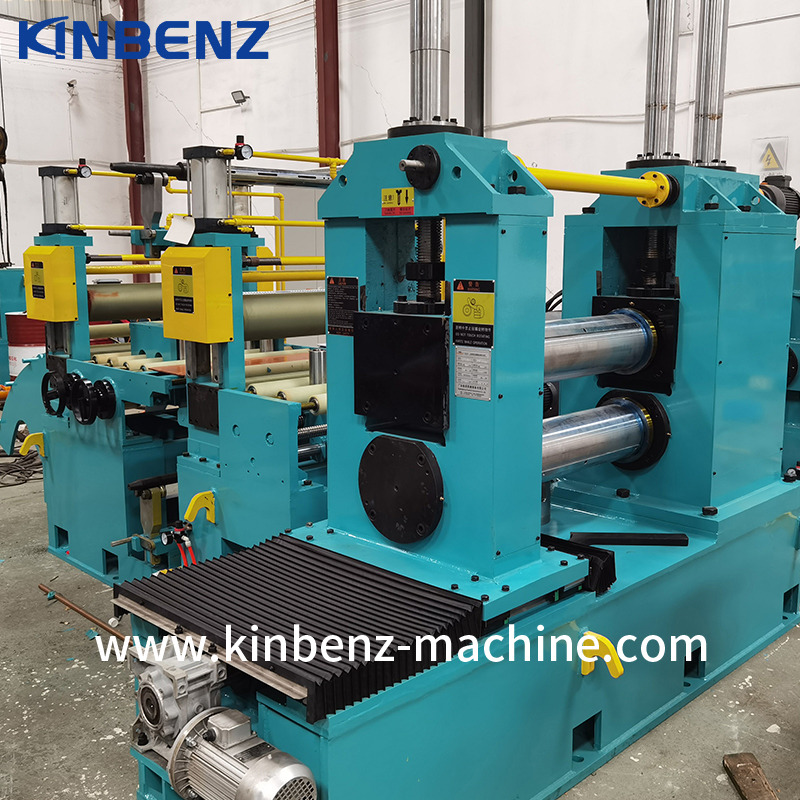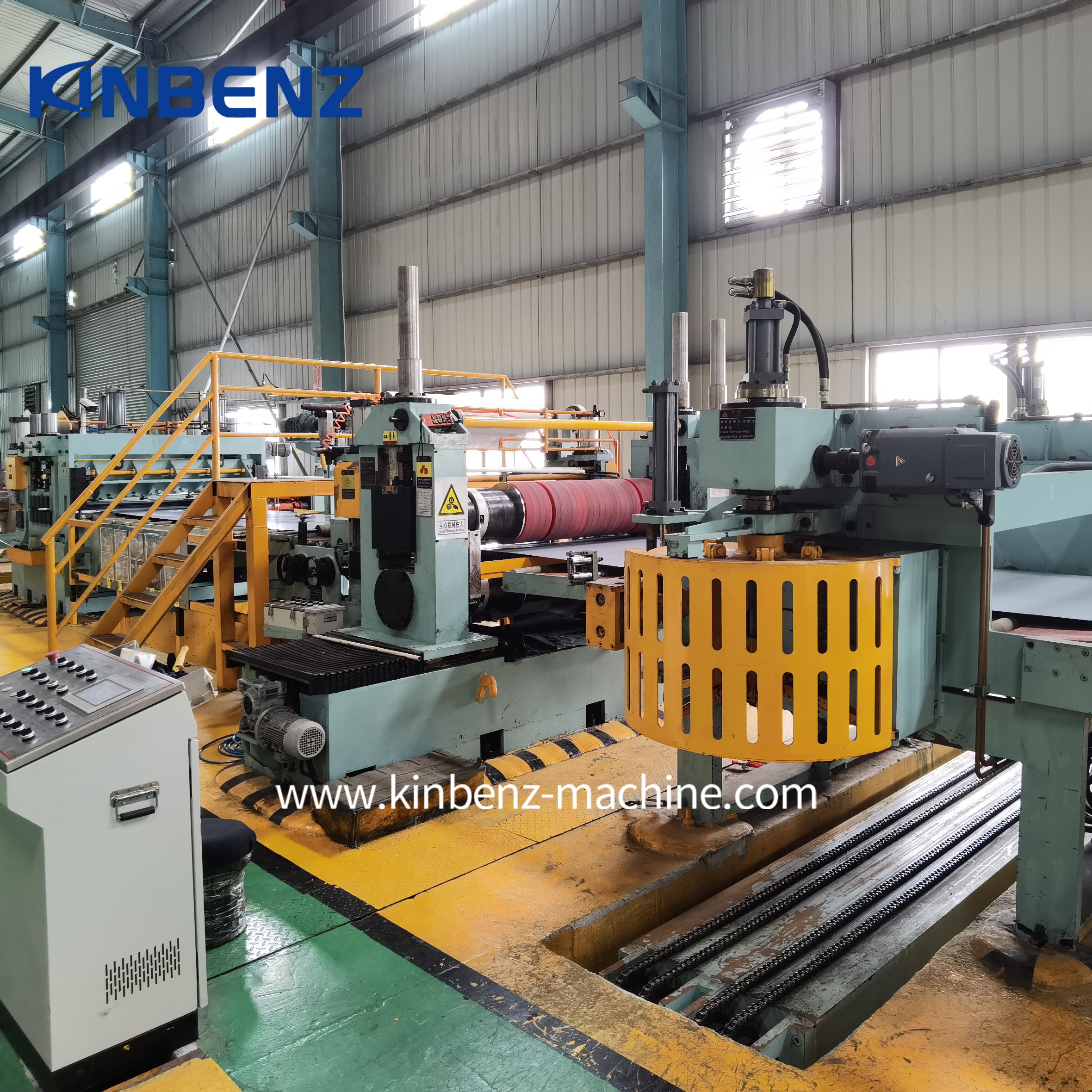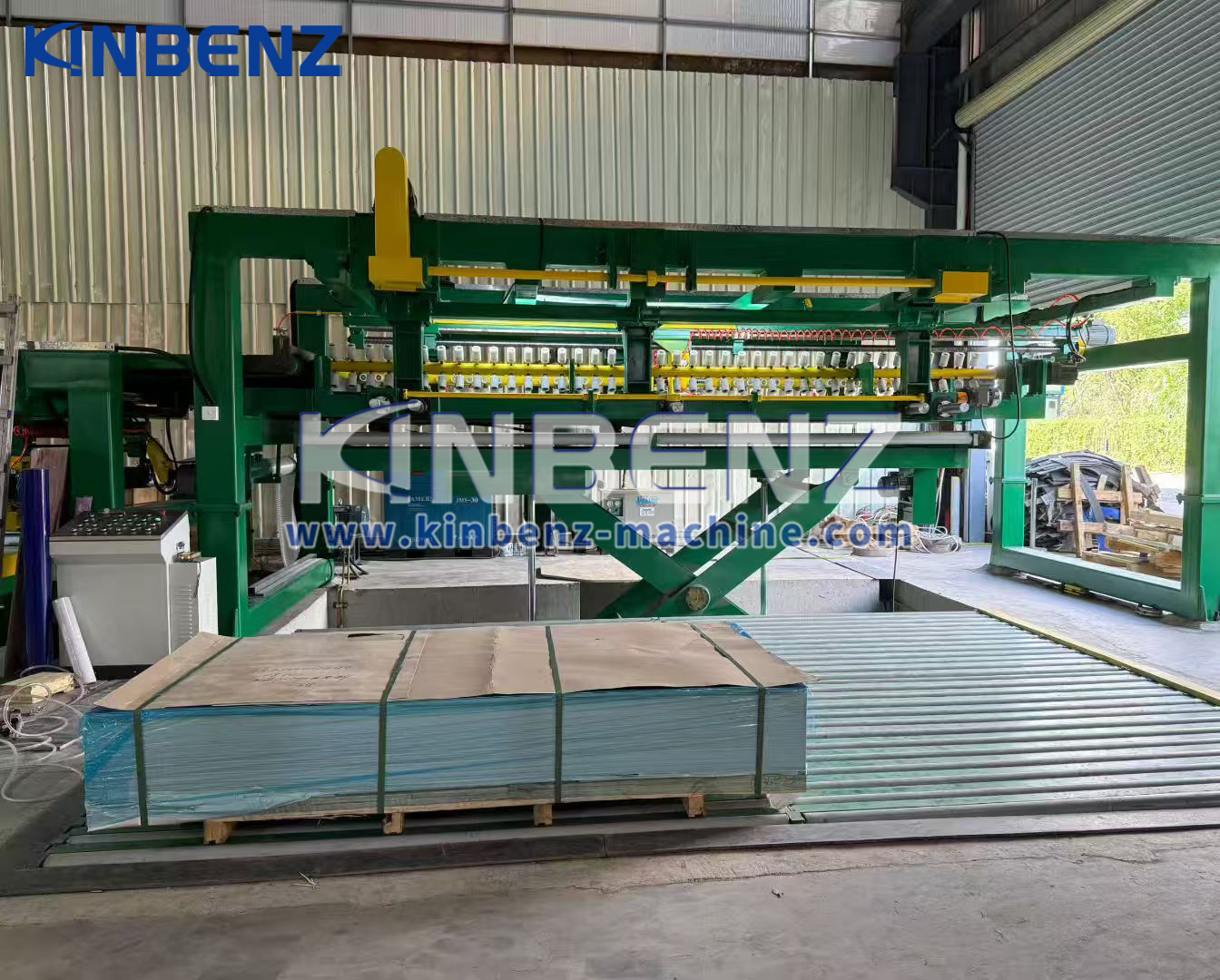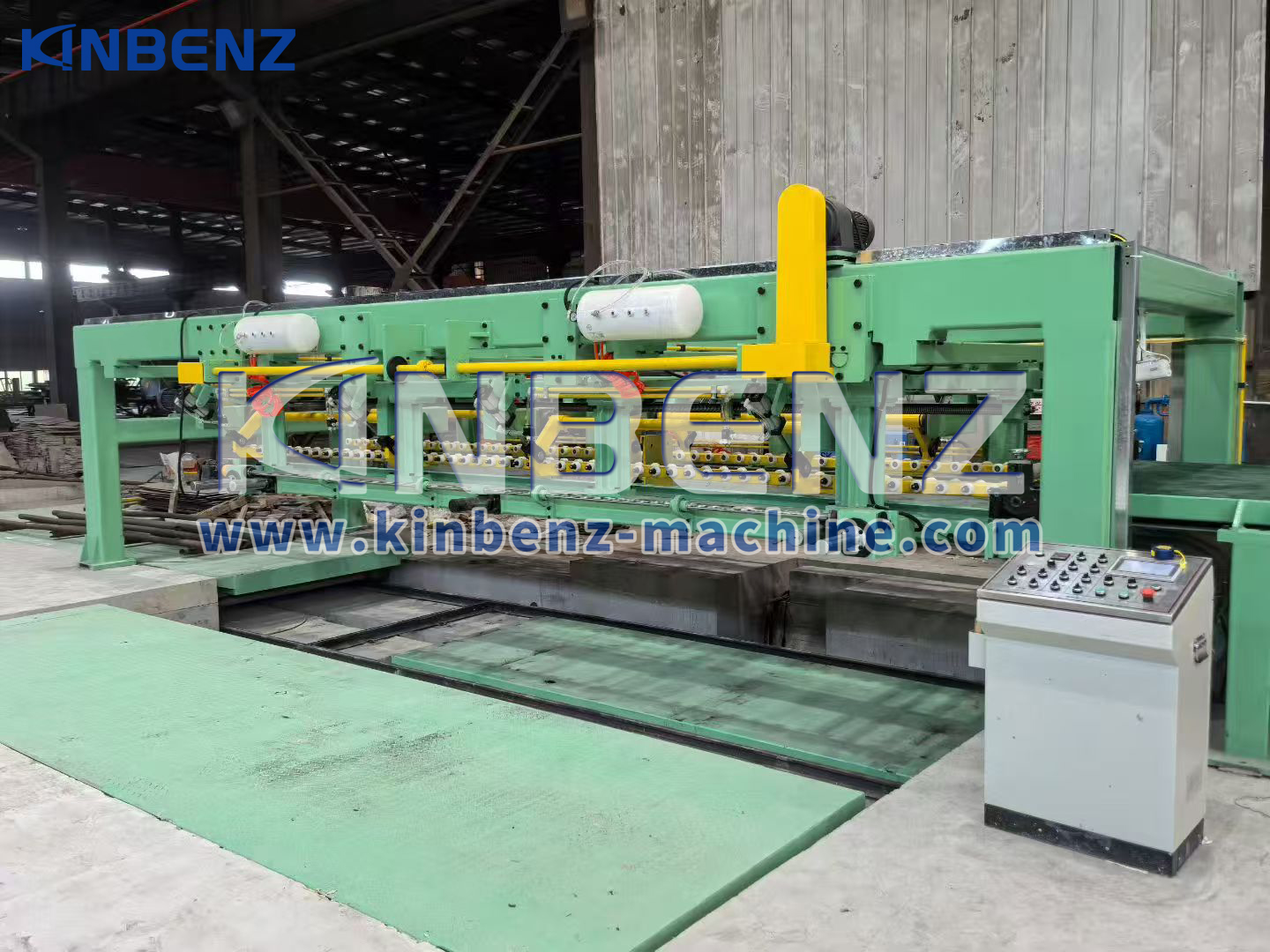|
|
What are the Final Applications of Metal Strips Slitted by Metal Coil Slitting Line
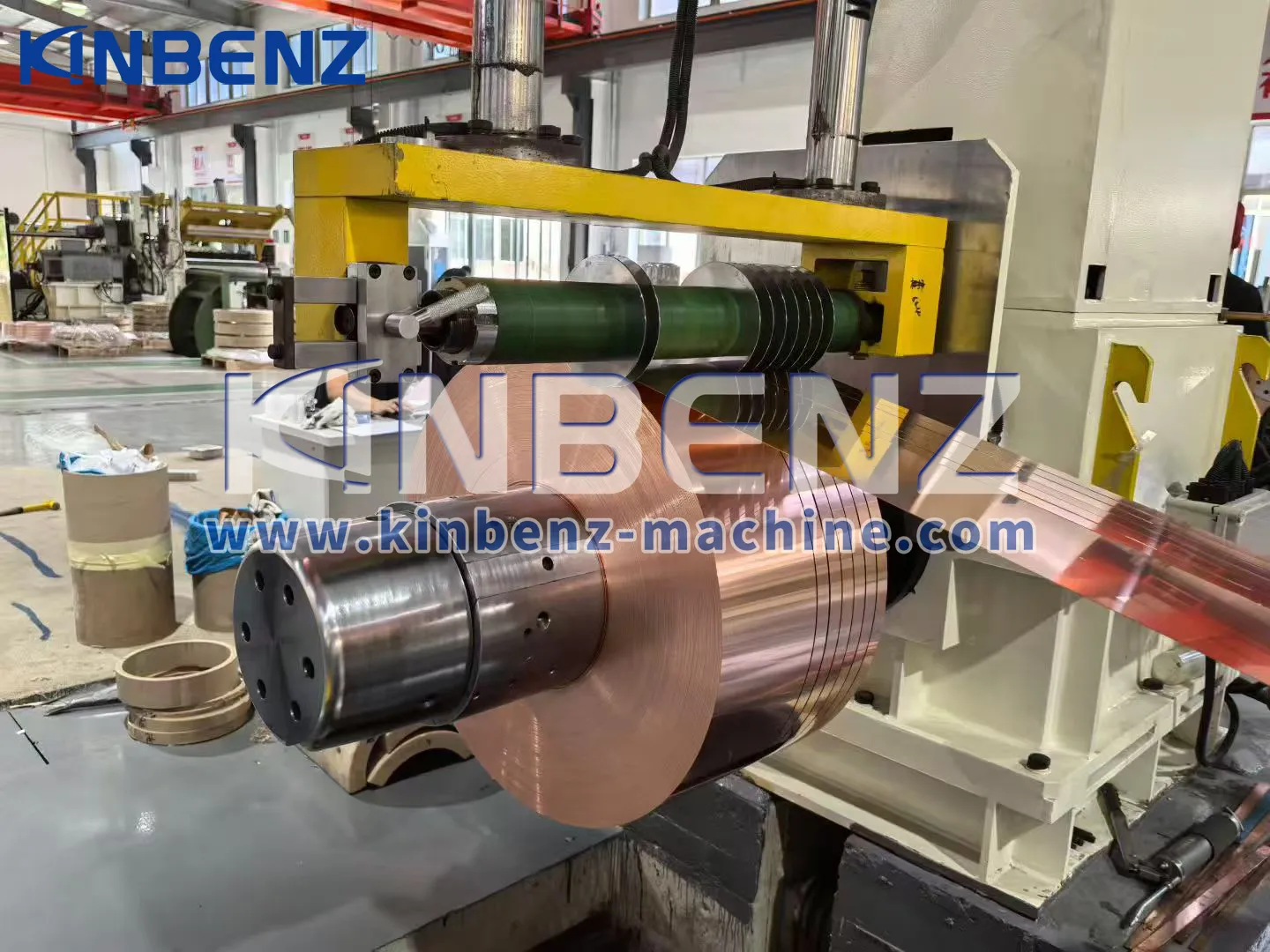
2025-10-28
What Does a Metal Coil Slitting Line Do?
Metal coil slitting line uncoils, slits and recoilis wide metal coils into narrower strips.
This process requires high precision and stable tension control to ensure each slit edge remains clean and burr-free.
Our KINBENZ Automatic Slitting Line features:
- Precision slitter head for smooth and accurate slitting
- Automatic tension control during recoiling
- Speed up to 180m/min for high-volume production
- Adaptability to materials like stainless steel, carbon steel, aluminum, copper and galvanized steel
Once slitted, these strips are rewound into smaller coils - ready to be used in various industries.
Where Are These Metal Strips Used?
The slitted metal strips serve as raw materials for many industrial applications. Below are the most common end uses by industry:
1. Automotive Industry
Metal strips are widely used in:
- Manufacturing car body frames, reinforcement parts, and brackets
- Producing exhaust components and fuel system parts
- Forming trim pieces and heat shields
- Thin stainless steel and galvanized steel strips offer corrosion resistance and strength - perfect for vehicle components.
2. Electrical and Electronics
Copper and aluminum strips are essential for:
- Transformer windings
- Motor stator and rotor laminations
- Busbars and cable shielding
- Battery cell casing materials
Precision is key here - even a small deviation in strip width can affect electrical efficiency.
3. Construction and Building Materials
Aluminum strips are formed into:
- Roofing sheets, wall panels, ceiling grids
- Pipes, tubes, and steel profiles
- Metal framing systems and channels (These strips are often reprocessed in roll forming lines or welded pipe mills)
4. Packaging and Container Industry
Aluminum strips are formed into:
- Beverage cans, foil lids and caps
- Food packaging trays and sealing materials (Their light weight and excellent corrosion resistance make them ideal for hygienic packaging)
5. Household Appliances
Stainless steel and aluminum strips are used to manufacture:
- Washing machine panels
- Refrigerator doors
- Microwave ovens and kitchen appliances
High surface finish and dimensional accuracy ensure product appearance and assembly quality.
Advantages of Using KINBENZ Slitting Lines
KINBENZ slitting lines are engineered for efficiency, accuracy , and reliability, offering:
- Automatic setup and alignment for faster coil changeover
- Precision cutting with minimal burrs or edge deformation
- Consistent tension control for smooth recoiling
- Customization options for various coil thickness, materials and widths
These advantages help downstream manufacturers reduce waste, boost productivity, and ensure consistent quality in their finished products.
FAQ: About Metal Coil Slitting and Applications
Q1: What materials can be processed by slitting line?
A: KINBENZ slitting lines can process stainless steel, carbon steel, galvanized steel, aluminum, copper and other metal materials.
Q2: What are typical coil thickness and widths handled?
A: Depending on configuration, our lines can handle thickness from 0.2mm to 12mm
Q3: Are the strips ready for immediate use after slitting?
A: Yes. The slitted coils can be directly fed into stamping, roll forming, welding, or lamination machines in the next stage of production.
Q4: Can KINBENZ provide customzied slitting solutions?
A: Absolutely. We design each line according to the client's required material type, coil size, strip width, and production capacity.
The metal strips produced by slitting lines are the foundation for countless industrial applications—from automobiles to electronics and home appliances.
With its high precision, full automation, and flexible customization, KINBENZ Slitting Line ensures manufacturers receive consistent, high-quality strips that drive productivity and performance across industries.
What Does a Metal Coil Slitting Line Do?
Metal coil slitting line uncoils, slits and recoilis wide metal coils into narrower strips.
This process requires high precision and stable tension control to ensure each slit edge remains clean and burr-free.
Our KINBENZ Automatic Slitting Line features:
- Precision slitter head for smooth and accurate slitting
- Automatic tension control during recoiling
- Speed up to 180m/min for high-volume production
- Adaptability to materials like stainless steel, carbon steel, aluminum, copper and galvanized steel
Once slitted, these strips are rewound into smaller coils - ready to be used in various industries.
Where Are These Metal Strips Used?
The slitted metal strips serve as raw materials for many industrial applications. Below are the most common end uses by industry:
1. Automotive Industry
Metal strips are widely used in:
- Manufacturing car body frames, reinforcement parts, and brackets
- Producing exhaust components and fuel system parts
- Forming trim pieces and heat shields
- Thin stainless steel and galvanized steel strips offer corrosion resistance and strength - perfect for vehicle components.
2. Electrical and Electronics
Copper and aluminum strips are essential for:
- Transformer windings
- Motor stator and rotor laminations
- Busbars and cable shielding
- Battery cell casing materials
Precision is key here - even a small deviation in strip width can affect electrical efficiency.
3. Construction and Building Materials
Aluminum strips are formed into:
- Roofing sheets, wall panels, ceiling grids
- Pipes, tubes, and steel profiles
- Metal framing systems and channels (These strips are often reprocessed in roll forming lines or welded pipe mills)
4. Packaging and Container Industry
Aluminum strips are formed into:
- Beverage cans, foil lids and caps
- Food packaging trays and sealing materials (Their light weight and excellent corrosion resistance make them ideal for hygienic packaging)
5. Household Appliances
Stainless steel and aluminum strips are used to manufacture:
- Washing machine panels
- Refrigerator doors
- Microwave ovens and kitchen appliances
High surface finish and dimensional accuracy ensure product appearance and assembly quality.
Advantages of Using KINBENZ Slitting Lines
KINBENZ slitting lines are engineered for efficiency, accuracy , and reliability, offering:
- Automatic setup and alignment for faster coil changeover
- Precision cutting with minimal burrs or edge deformation
- Consistent tension control for smooth recoiling
- Customization options for various coil thickness, materials and widths
These advantages help downstream manufacturers reduce waste, boost productivity, and ensure consistent quality in their finished products.
FAQ: About Metal Coil Slitting and Applications
Q1: What materials can be processed by slitting line?
A: KINBENZ slitting lines can process stainless steel, carbon steel, galvanized steel, aluminum, copper and other metal materials.
Q2: What are typical coil thickness and widths handled?
A: Depending on configuration, our lines can handle thickness from 0.2mm to 12mm
Q3: Are the strips ready for immediate use after slitting?
A: Yes. The slitted coils can be directly fed into stamping, roll forming, welding, or lamination machines in the next stage of production.
Q4: Can KINBENZ provide customzied slitting solutions?
A: Absolutely. We design each line according to the client's required material type, coil size, strip width, and production capacity.
The metal strips produced by slitting lines are the foundation for countless industrial applications—from automobiles to electronics and home appliances.
With its high precision, full automation, and flexible customization, KINBENZ Slitting Line ensures manufacturers receive consistent, high-quality strips that drive productivity and performance across industries.





